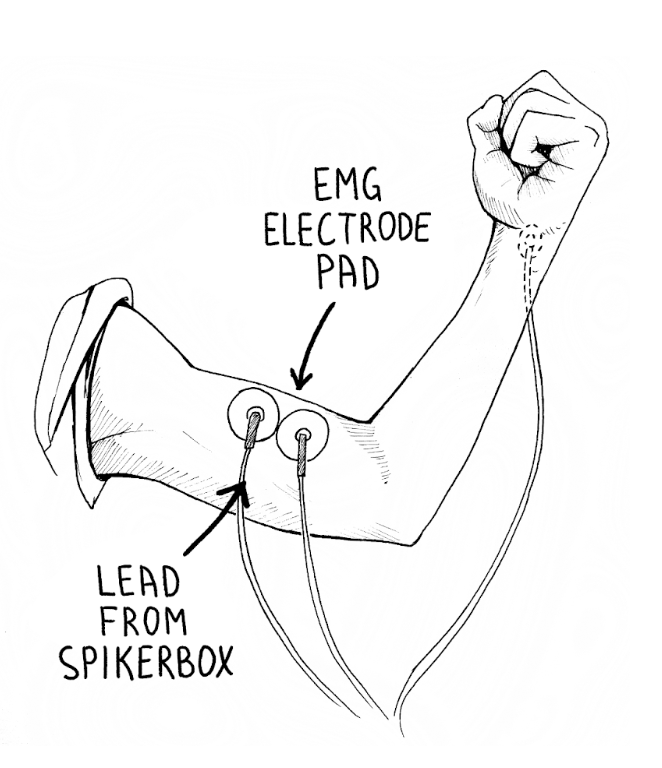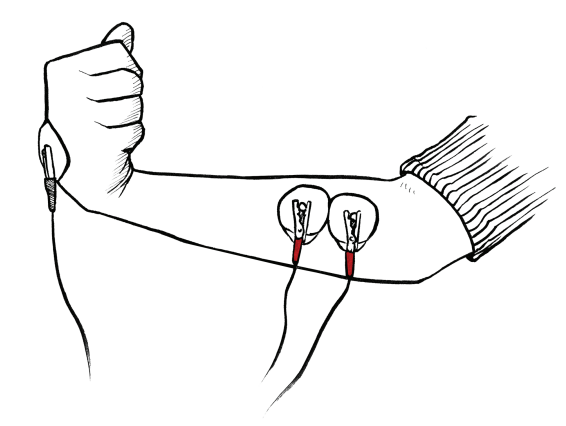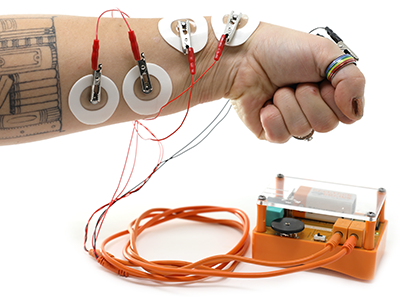
Muscle Fatigue: Watching Motor Units Drop Out

Why do your muscles burn and shake during those last few reps at the gym? Record real-time EMG while holding a weight or gripping a dynamometer to see motor units fade and force output decline.
About experiment
What Will You Learn?
- How to place EMG electrodes and record muscle activity.
- How sustained contractions lead to motor-unit fatigue and dropout.
- Why force production and endurance differ between muscles and individuals.
Background
Muscle fatigue is the loss of force-generating capacity. During short, intense efforts—such as isometric dumbbell holds—anaerobic metabolism rapidly depletes ATP, and larger motor units drop out first. Endurance tasks depend on continuous oxygen delivery and smaller motor units. By monitoring EMG you can watch amplitude fall as fatigue sets in.
Procedure

Biceps Isometric Hold
1. Place two electrode patches on the biceps and attach the red leads. Ground on the back of the hand and connect the black lead.
2. Choose a dumbbell ≈ 60 % of your max (about 10 – 25 lb). Stand against a wall, bend the elbow to 90°, and hold without moving.
3. Record EMG in SpikeRecorder. Note the moment fatigue begins and when you must drop the weight.
4. Watch EMG amplitude decrease—evidence that larger motor units are dropping out.

Forearm Grip — Dynamometer
1. Place two electrodes on the inner forearm; ground on the back of the hand.
2. Squeeze a hand dynamometer (or strain-gauge grip sensor) as hard as possible and hold.
3. Record EMG and force simultaneously. Expect intermittent drops and bursts as you recommit to maximum grip.
4. Continue to failure, then save both EMG and force traces for analysis.
Results & Analysis
1. EMG Amplitude & Motor-Unit Dropout
In SpikeRecorder, highlight the first and last 5 s of your recording and note each RMS value. A falling RMS confirms motor-unit fatigue.
2. Rate of Fatigue
Calculate slope m = (ΔRMS) / Δtime. Example: RMS from 6.8 mV to 2.1 mV over 116 s gives m ≈ –0.04 mV s⁻¹.
3. Compare Individuals & Sexes
Repeat the test across classmates. Men often show higher peak force, while women may fatigue more slowly.
4. Discussion Prompts
• How do anaerobic vs. aerobic pathways change endurance?
• Dominant vs. non-dominant limb differences?
• Why do marathoners fatigue over hours but max lifts fail in seconds?
• Which postural muscles resist fatigue best?
Retest after a month of training—does time to failure improve?
What do you need?
-
Related Products






